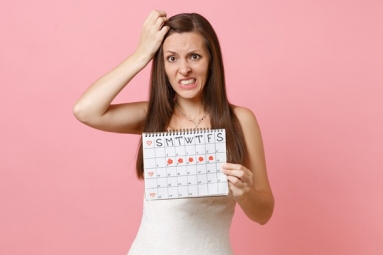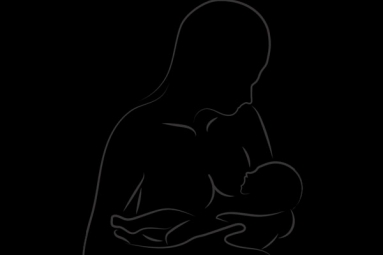Fewer Women in Indian Newsrooms: All You Need to Know About ‘Gender Inequality in Media’
August 03, 2019 14:56
The role of media in society is crucial. From imparting factual news to the general public to putting an end to below the belt deeds prevailing in society, the media is playing a massive role in the world at large.
Shockingly, a report named ‘Gender Inequality in Media’ revealed that male domination in newsrooms is continuing while there is more diversity in digital media.
The report initiated by Media Rumble in collaboration with the United Nations Women found that women were nowhere found in leadership positions in the seven Hindu and English newspapers it surveyed for six months till March 2019.
In case of TV channels, magazines, and digital portals, only 20.9 percent, 13.6 percent, and 26.3 percent women were found in leadership roles viz. editor-in-chief, managing editor, executive editor, bureau chief, or input/output editor.
The study also found that women continue to be given what is essentially “soft” beats like lifestyle and fashion, leaving the “hard” beats like politics, economy, and sports. “By thus marginalizing women’s voices and perspectives, the Indian media essentially denies nearly half of the population a chance to influence public opinion. This runs counter to the principles of fairness, equality, and democracy,” the report said.
According to The News Minute, among English dailies, of nearly 3000 writers whose articles were surveyed, only 1/4th of them were women, and only 20 percent of the articles surveyed were found to be published by women. While Economic Times had the most bylines of women, it was only at a low 28.2 percent compared to 71.8 percent of men’s bylines. The Telegraph and The Hindu turned out worst, with only 15.5 percent and 11.8 percent published articles were being authored by women.
The numbers were worst for Hindi newspapers. Of the 6,806 articles surveyed, only 11 percent were authored by women. And only 17 percent of the writers of 2084 articles studied were women. Further, “women made up nearly 20 percent of the top decile in Amar Ujala but less than 7 percent in Hindustan and around 5 percent each in Rajasthan Patrika and Punjab Kesari,” the report found.
The report further found that women got to write less on topics like defense, politics, national security, and sports, with the latter topic having 94.1 percent articles written by men in English dailies, and 90.2 percent written by men in the Hindi papers.
In Hindi papers, “save for International Affairs and Environment and Energy, women wrote no more than 15 percent of the articles on all topics, with their share of bylines dropping below 5 percent in case of Crime and Accident, Defence and National Security, and Sports.”
When it came to coverage of gender issues, all of the seven Hindi newspapers had carried such articles on their front pages. However, only about 3 percent of all articles were written on gender issues in both English and Hindi dailies. Even so, The Hindu and Telegraph only had 17.9 percent and 24.1 percent of articles written on gender bylined by women. Overall, over half of all articles on gender issues had been written by women.
Electronic Media
Among the 1967 people who participated in debates on English channels, only 15.7 percent were women. Hindi channels fared slightly worse with only 12 percent being women from the 1252 individuals who participated.
Of the seven English TV channels chosen, while Mirror Now had the highest number of female panelists (25.7 percent), and their appearance on debates (23 percent), Rajya Sabha TV had the lowest numbers in both respects with only 12.3 percent women panelists. In Hindi channels, Aaj Tak had the highest number of women panelists but at a measly 10.4 percent.
Further, several channels were guilty of having manels, or all-male panels, for half or more of their debates. These include CNN News18, Republic TV, Times Now, India Today and Rajya Sabha TV, which the latter have the proportion of manels being 82 percent on its debates. In Hindi channels, “over half of the debates across these channels featured all-male panels, with the figure rising to nearly 75 percent in case of India TV and NDTV India.”
“Representation of woman panelists who were bureaucrats, defense experts, financial experts, or think tank representatives were particularly low,” the report observed, on English channels. And on Hindi channels, “women’s representation rose to about a quarter in panels debating matters related to Culture and Entertainment or Public Life, and a third in panels debating Science and Technology matters,” and not one woman panelist was a bureaucrat, defense or financial expert, or represented a think tank.
Even when it came to debates on gender issues, there were times where women were inadequately represented in the panels. For instance, Zee News and Aaj Tak had less than 40 percent of women panelists on gender debates. English channels fared slightly better with only Rajya Sabha TV having less than 50 percent women on panels discussing gender issues. India Today and NDTV had the most favorable proportion women on these panels at 71.4 percent and 64 percent respectively.
The only area in English channels where women enjoyed non-discriminatory representation was anchoring.
Digital Media
Among the digital newsrooms that had half or over half of their journalists being women were The News Minute (55.6 percent women contributors) and Scroll.in (50.6 percent women contributors). Others like Newslaundry (Hindi) and Swarajya had 88.6 percent and 79.7 percent male contributors.
Despite trends of a greater and better representation of gender in the number of articles published, the coverage of gender issues among digital media was still found to be low. “While women contributed many more articles on gender issues than men on average, Newslaundry (Hindi) and Swarajya again trailed. In all, though, only 3.7 percent of the around 21,000 articles discussed gender issues,” the study said.
Compared to traditional media, more women were found to be contributing to conventional “hard beats” like crime, environment, politics, and state and policy.
In terms of gender representation of contributors and articles on gender issues, The Print fared best with 72.3 percent female contributors and 84.7 percent articles on gender written by women. It was followed by The News Minute, with 71.4 percent women contributors and 82.9 percent articles written on gender being authored by women.
Radio and Magazines
All 12 magazines surveyed followed the broad trend of men predominating, Femina being the exception with 90.6% women contributors and 96.7% articles written by women. Of the 982 articles reviewed, only 25.8% were authored by women.
A Hindi magazine named Sarita, catered mostly to women, was found to have more male writers authoring articles during the six-month period of the study.
Only nine magazines carried articles on gender issues, however, not one of the 12 magazines had a cover page article that could be classified as based on a gender issue. “Moreover, most of the articles on gender issues published by these magazines were in October and November of last year when the MeToo allegations started surfacing, including in the media industry,” the study says.
Among the five private radio networks reviewed, it was found that there are not many women radio jockeys than men, overall, with some the stations based in some cities being an exception.
By Sowmya Sangam






